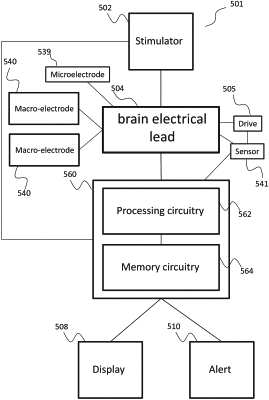| CPC A61B 34/20 (2016.02) [A61N 1/0534 (2013.01); A61N 1/0551 (2013.01); A61B 5/24 (2021.01); A61B 2034/107 (2016.02); A61B 2034/2053 (2016.02); A61B 2034/2065 (2016.02)] | 22 Claims |

|
1. A method for navigating an electrical lead having at least two electrodes to a selected brain target, comprising:
advancing an electrical lead comprising at least two electrodes through brain tissue along a selected insertion trajectory;
recording differential electrical signals by said at least two electrodes during said advancing;
analyzing said recorded differential electrical signals using stored reference indications of electrical signals associated with tissue along said insertion trajectory;
estimating proximity between a distal end of said electrical lead to said selected brain target based on results of said analyzing.
|